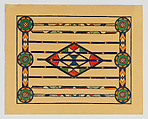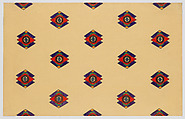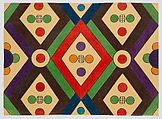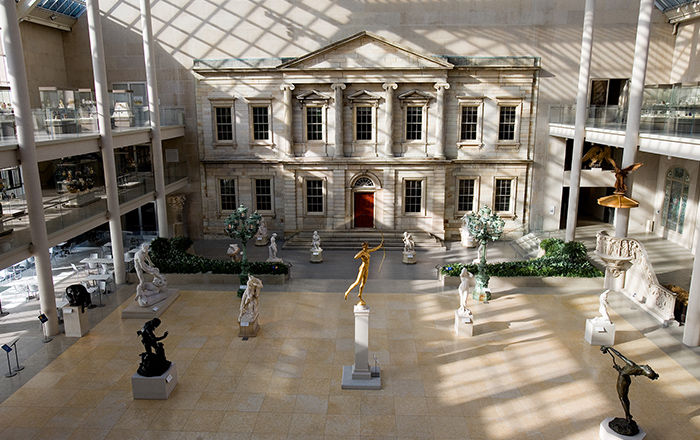Babe Ruth (1895–1948)
Mary Sully Native American
Mary Sully, born Susan Deloria on the Standing Rock Reservation in South Dakota, was a little-known, reclusive Yankton Dakota artist who, between the 1920s and the 1940s, created groundbreaking works informed by her Native American and settler ancestry. Working without patronage, in near obscurity, and largely self-taught, Sully produced some two hundred intricately designed and vividly colored drawings that complicate traditional notions of Native American and modern art. They mix meaningful aspects of her Dakota heritage with visual elements observed from other Native nations and the aesthetics of urban life. Euro-American celebrities from popular culture, politics, and religion inspired some of her most striking works, which she called “personality prints”—abstract portraits arranged as vertical triptychs. Together, Sully’s works offer a fresh, complex lens through which to consider American art and life in the early twentieth century.
Sully’s work represents the star athlete George Herman “Babe” Ruth in spare, dynamic form, with panels suggesting an artfully fractured baseball diamond as well as his personal flair. Ruth began his career, in 1914, as a pitcher and outfielder with the Baltimore Orioles, but it was with the New York Yankees that he secured his reputation as a powerful slugger, becoming the most famous (and highest-paid) athlete in the United States during the 1920s. Ruth’s larger-than-life personality made him especially newsworthy through the 1930s, and he is credited with establishing baseball as the dominant national sport of its time.
This image cannot be enlarged, viewed at full screen, or downloaded.
This artwork is meant to be viewed from right to left. Scroll left to view more.







